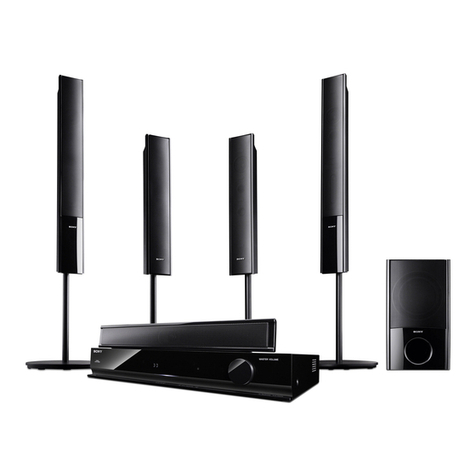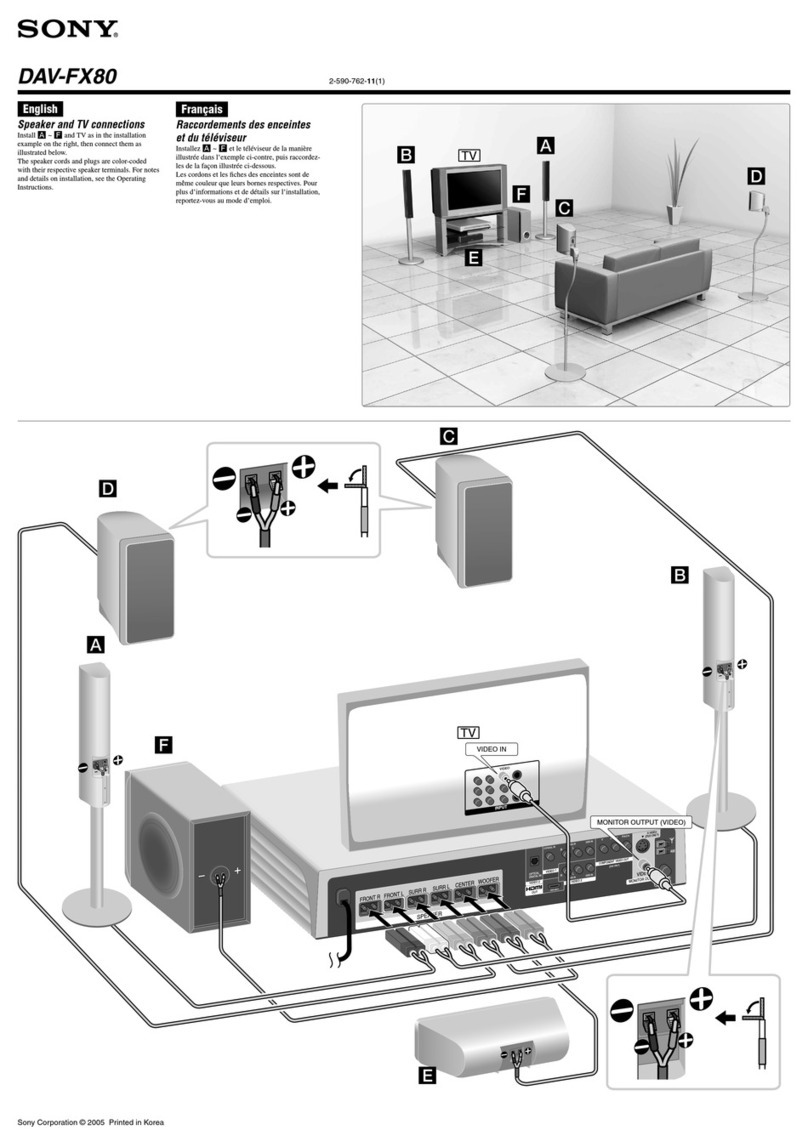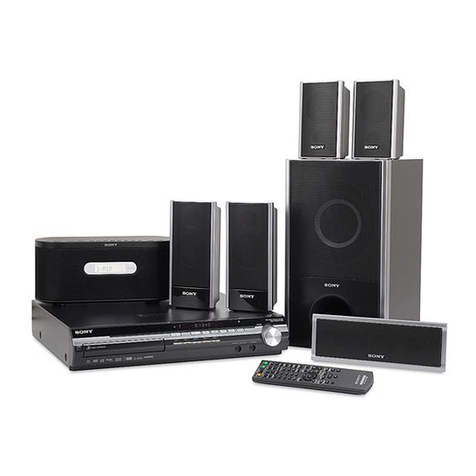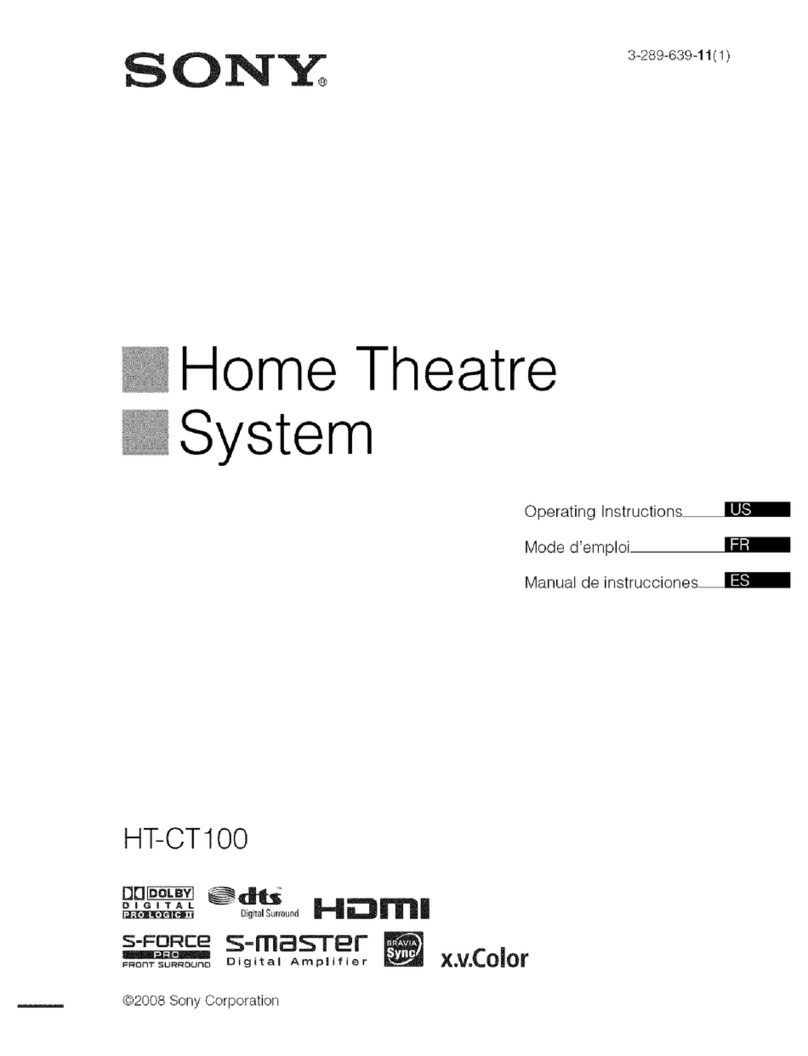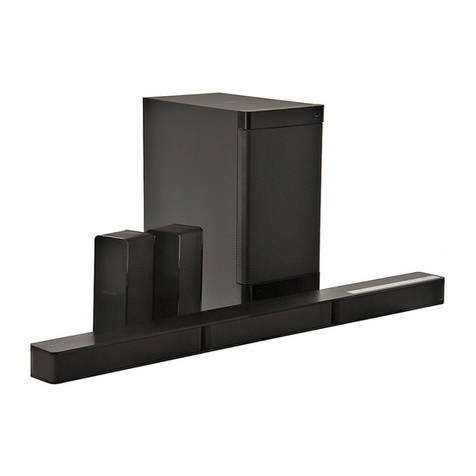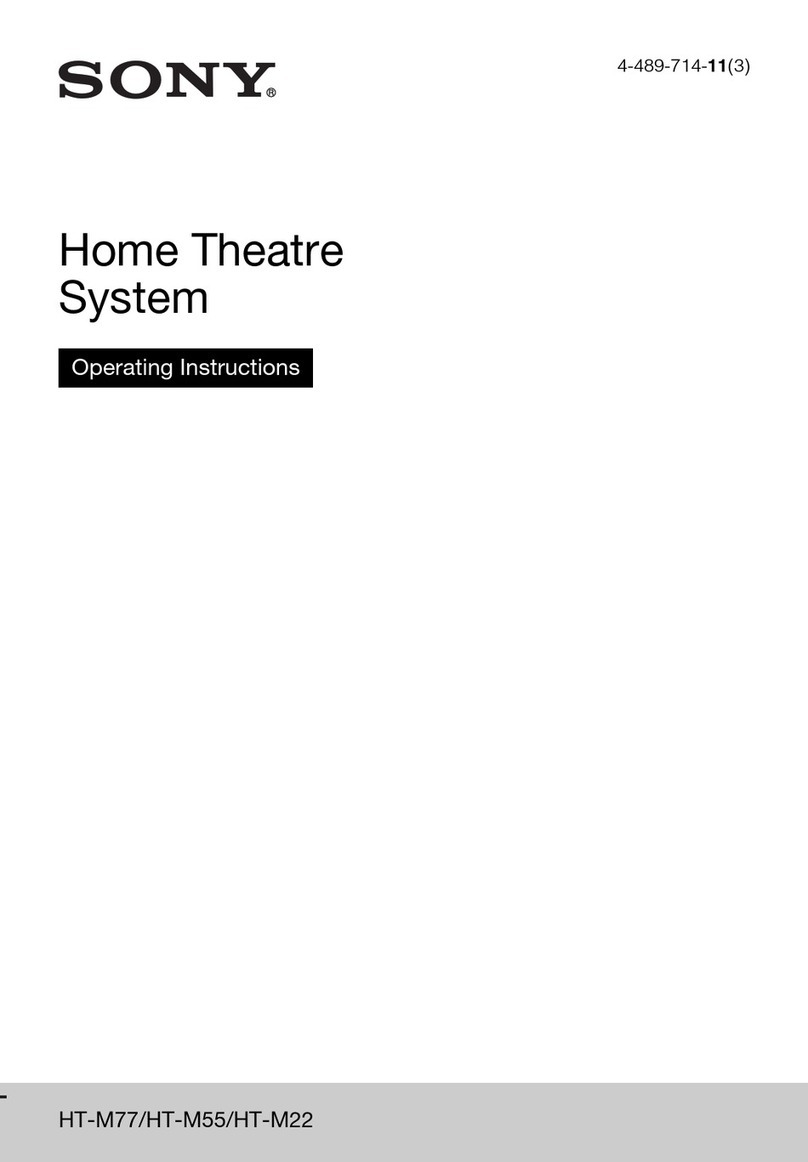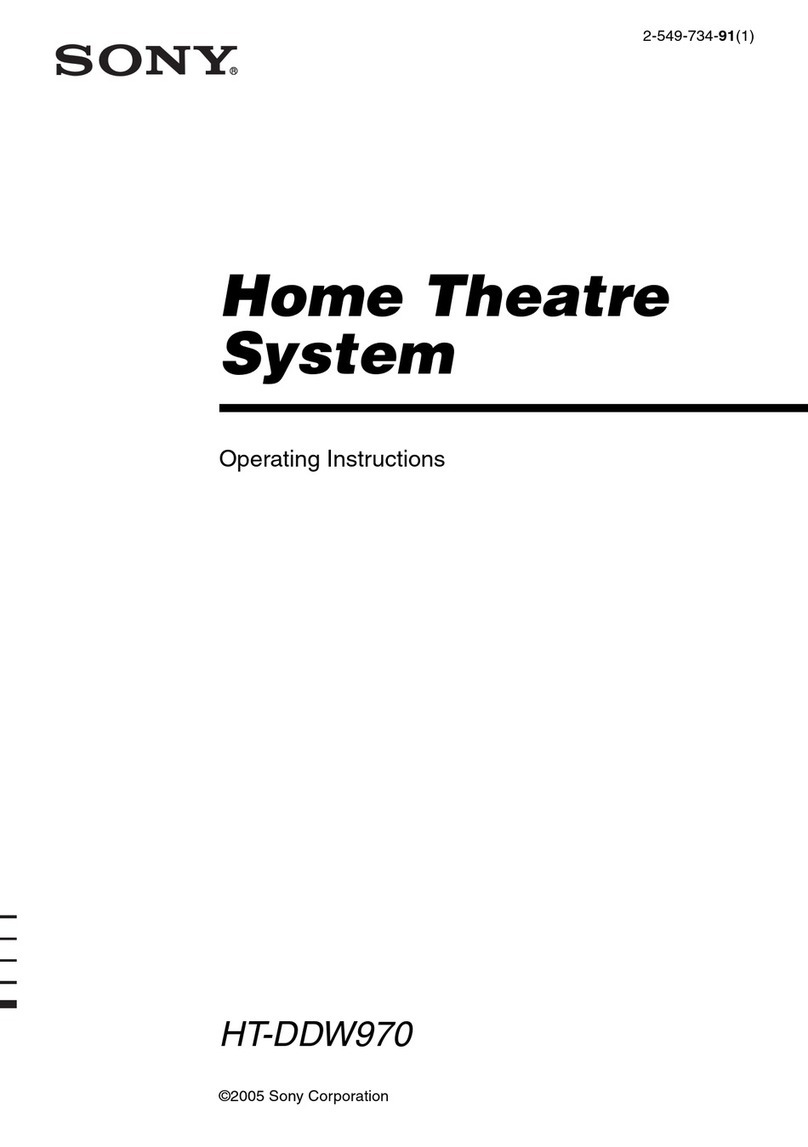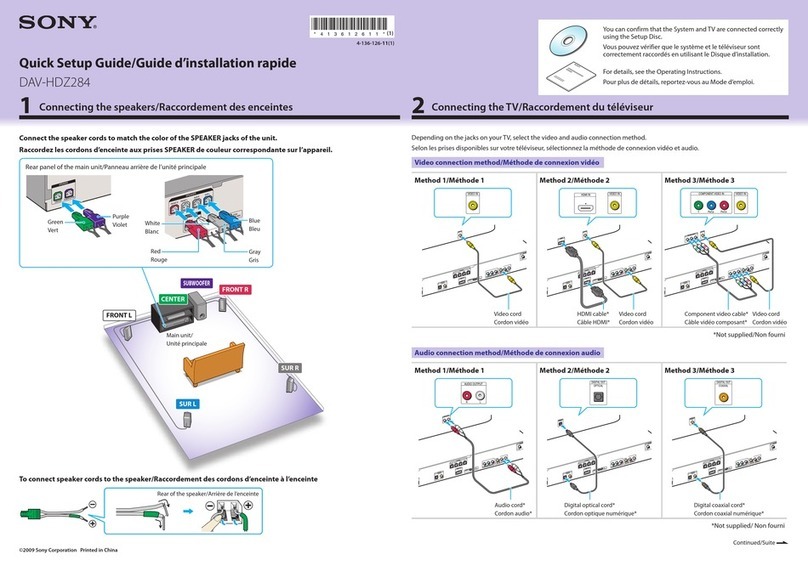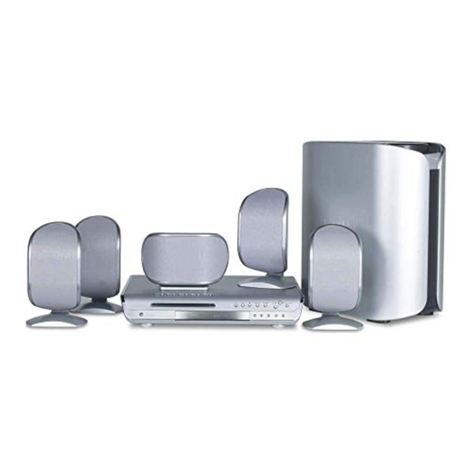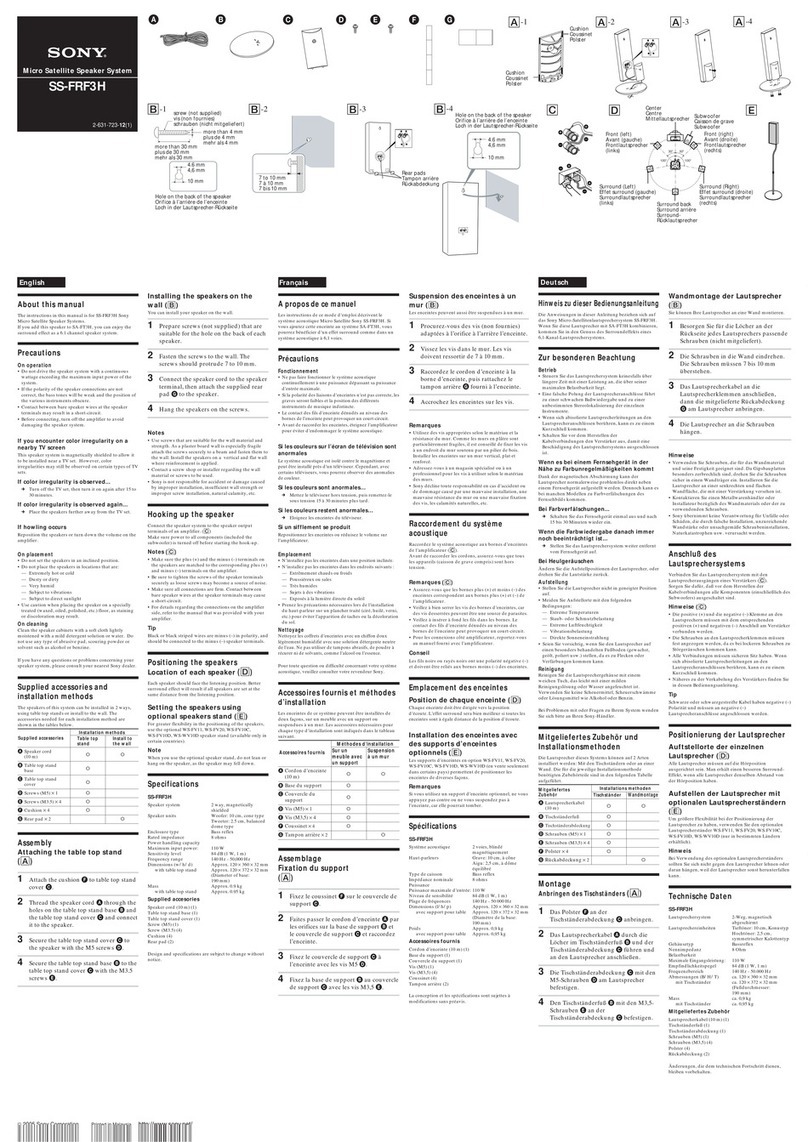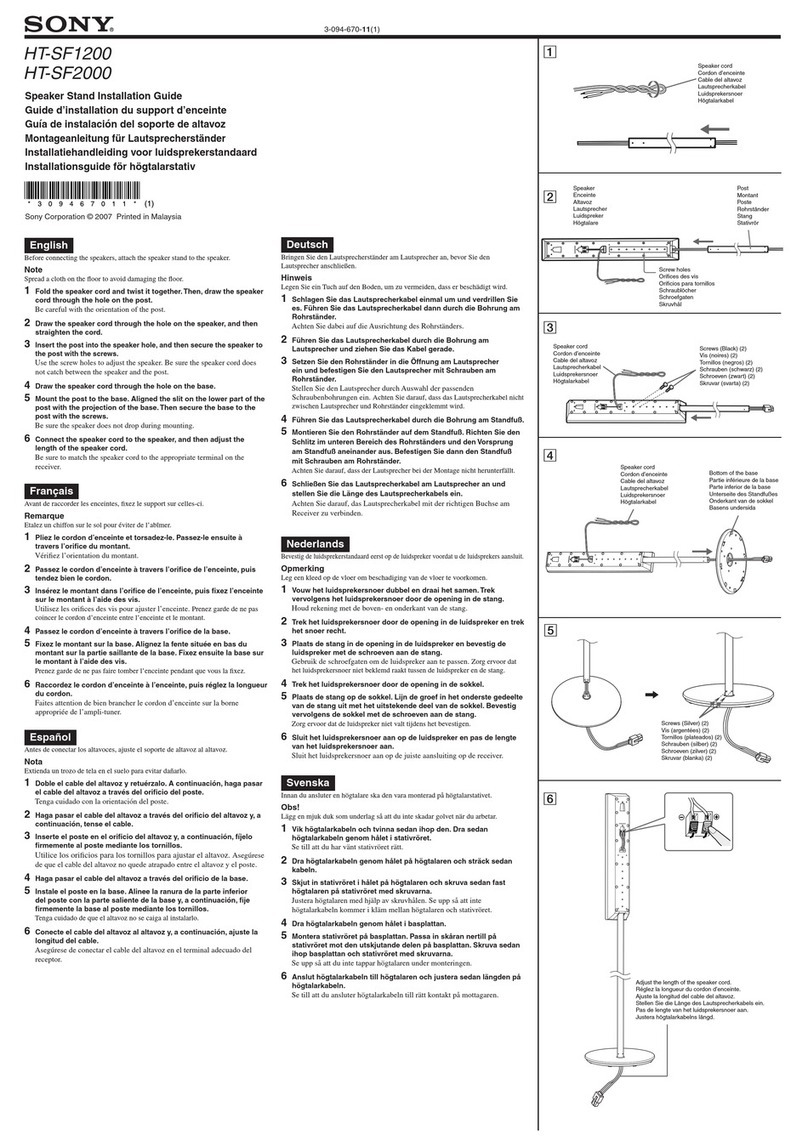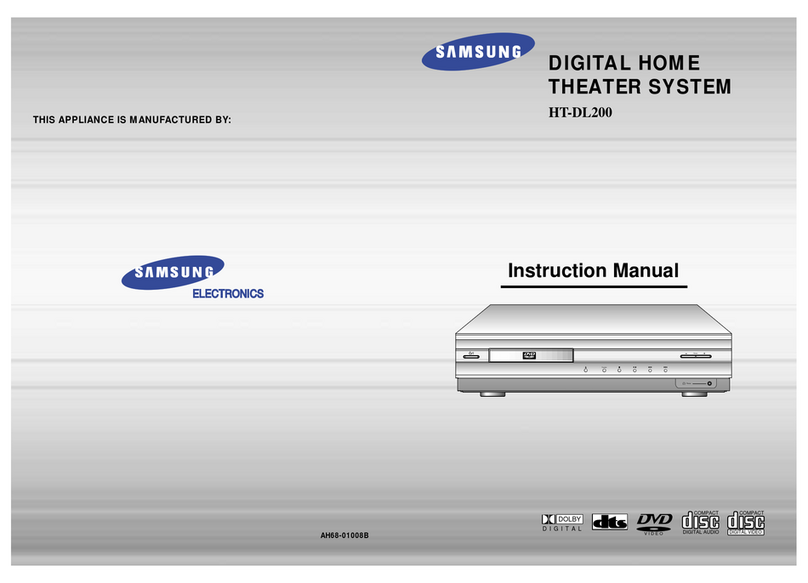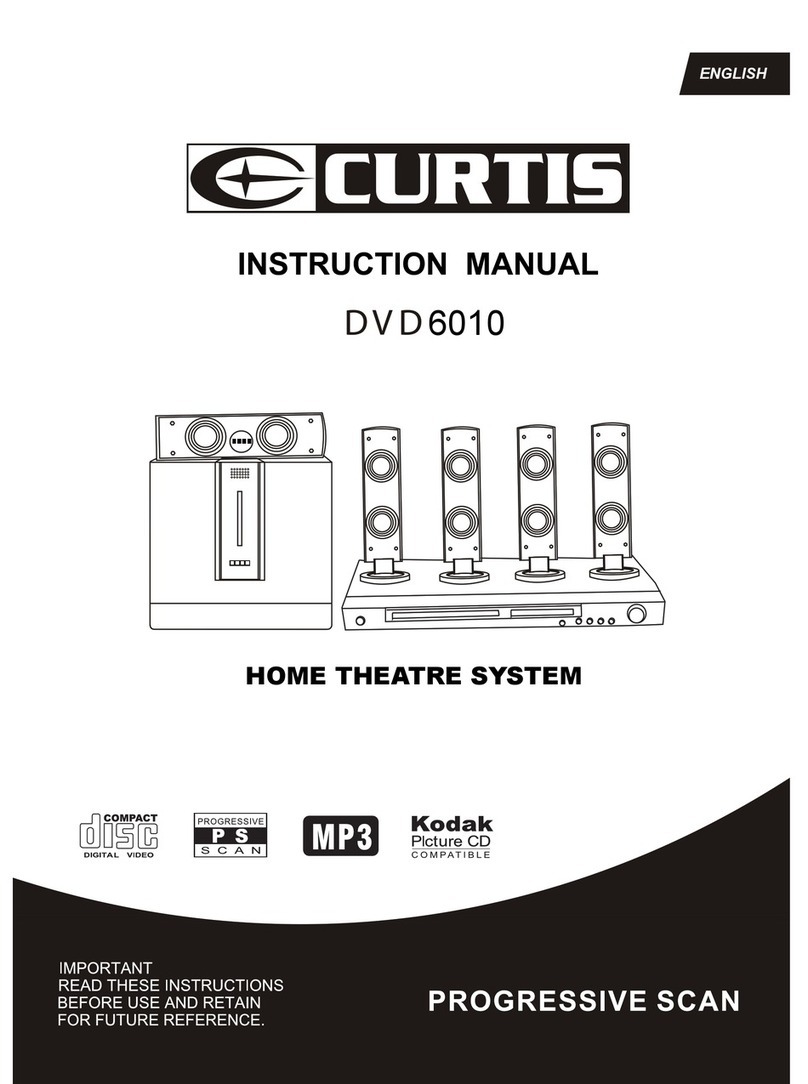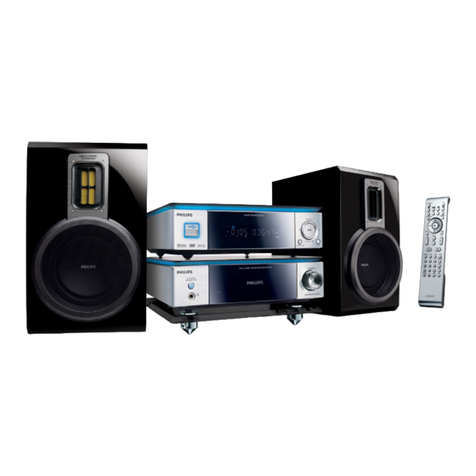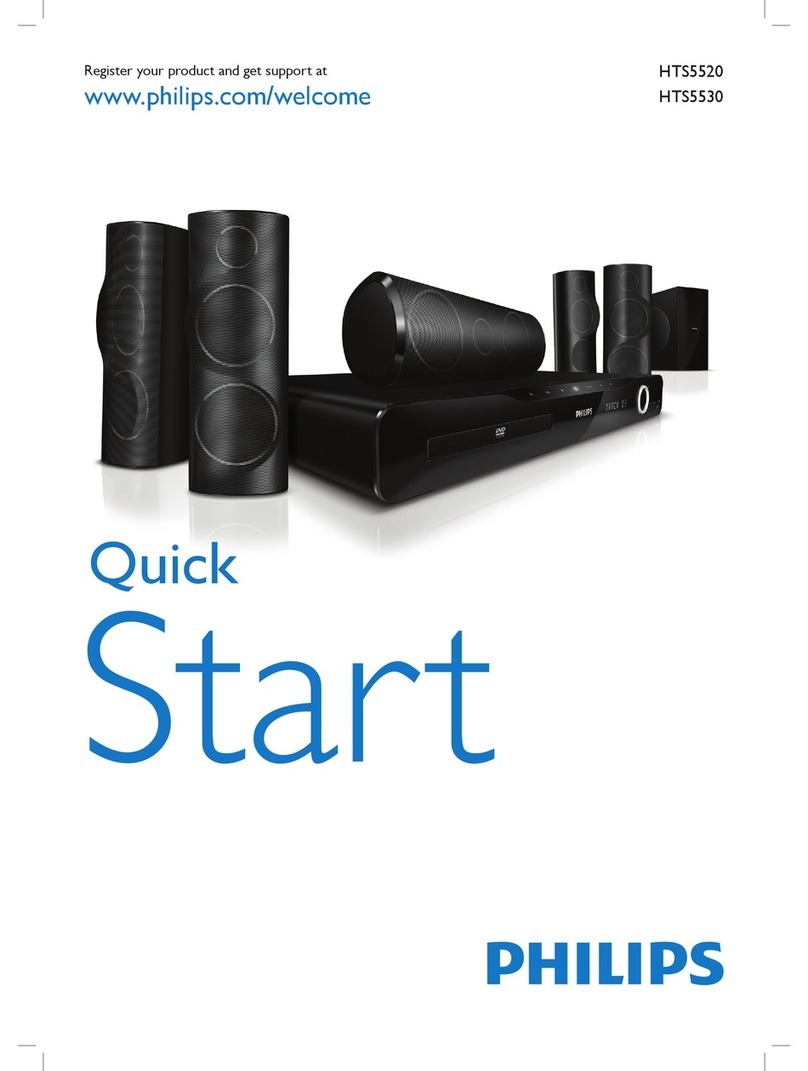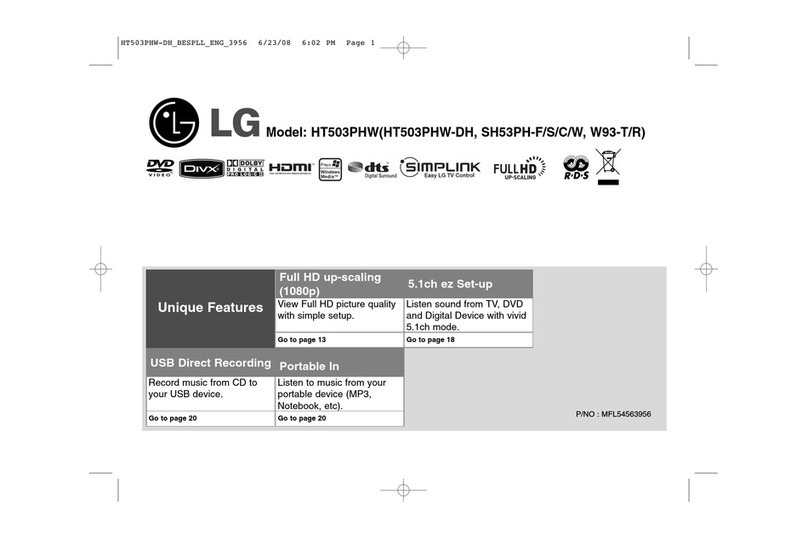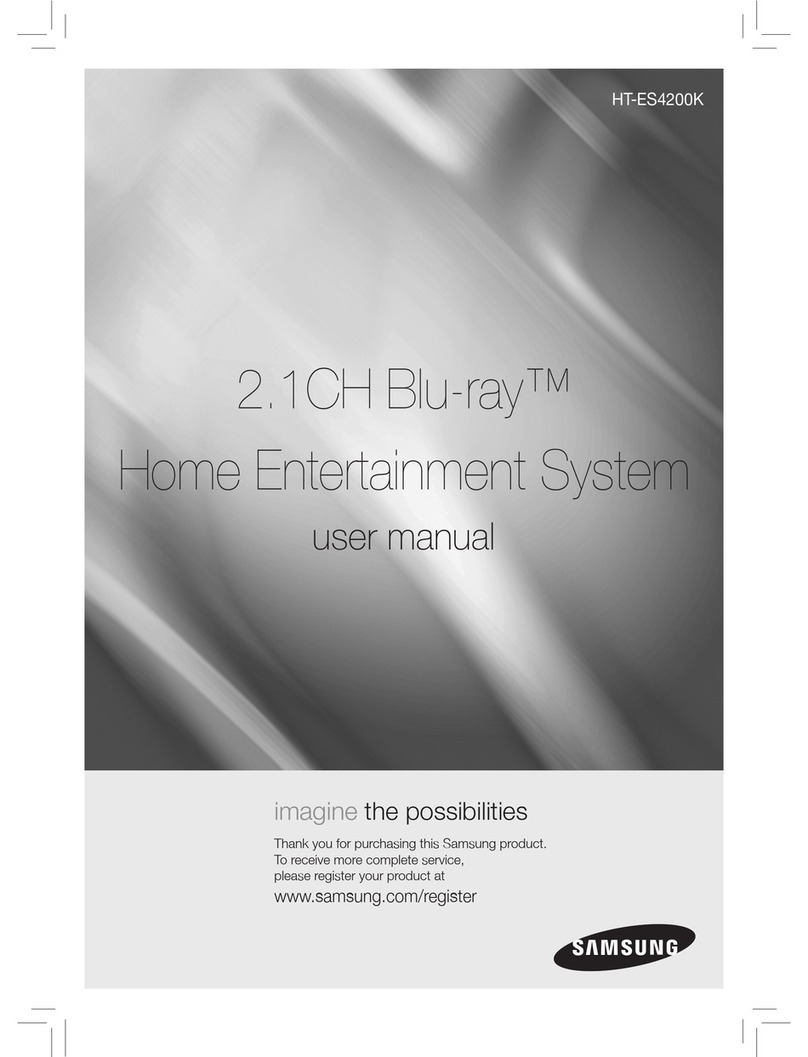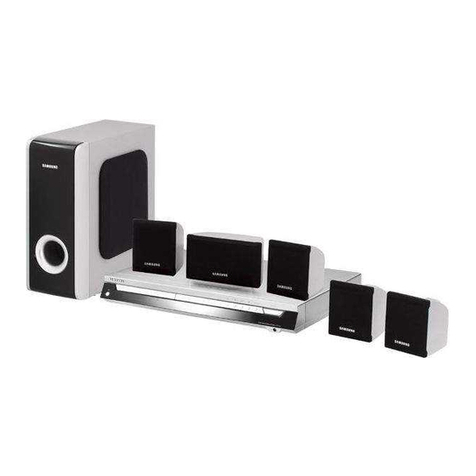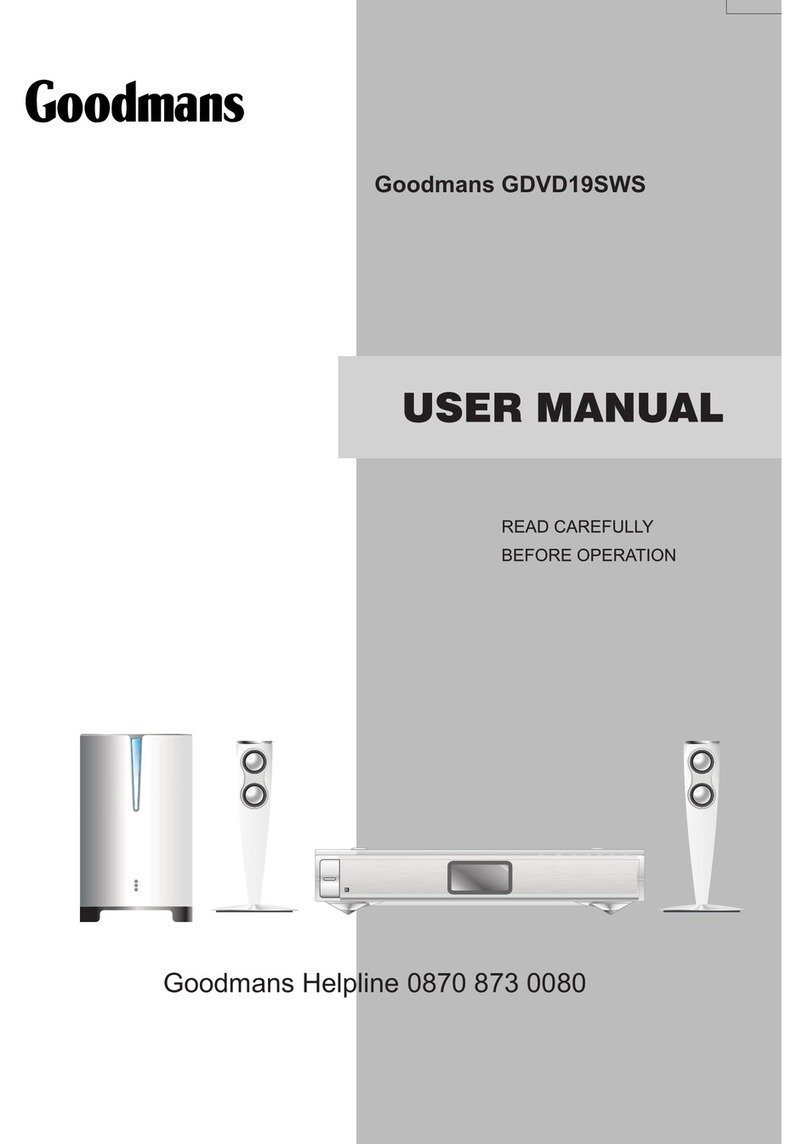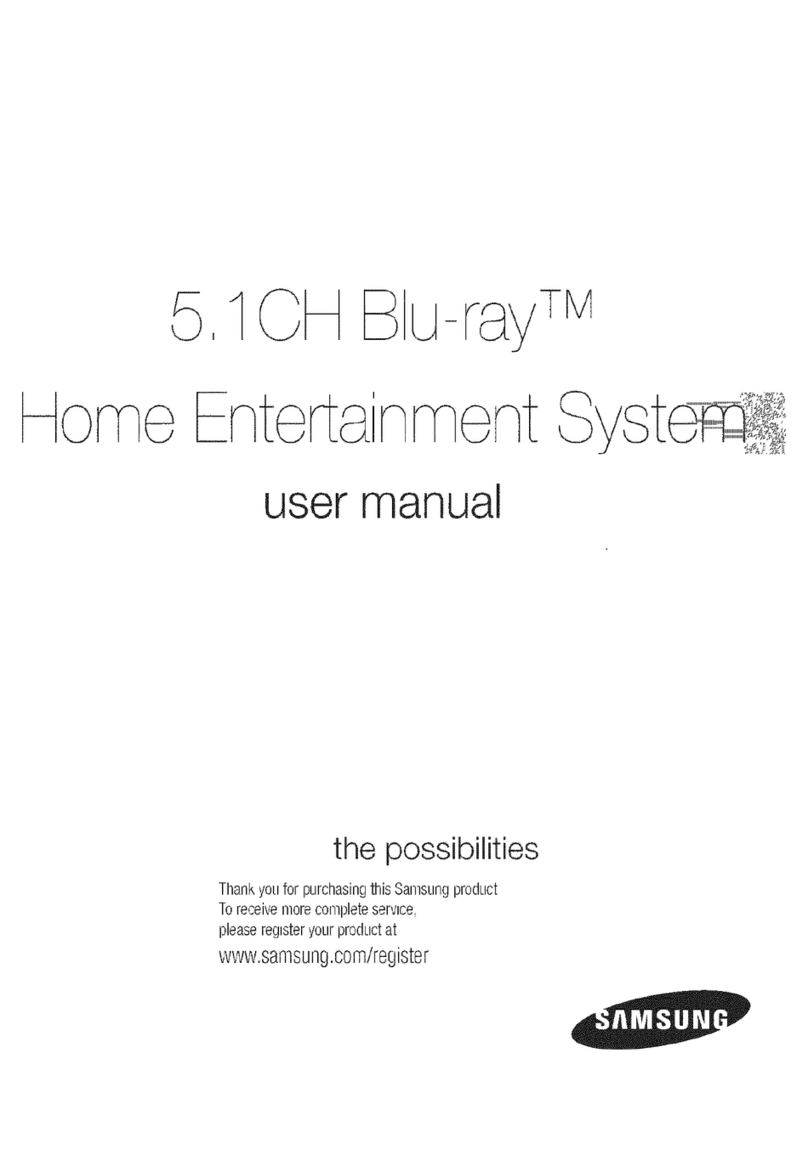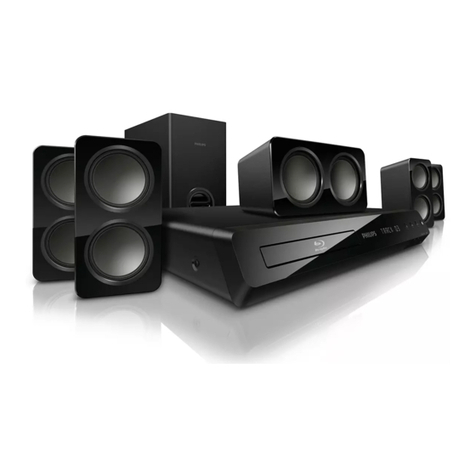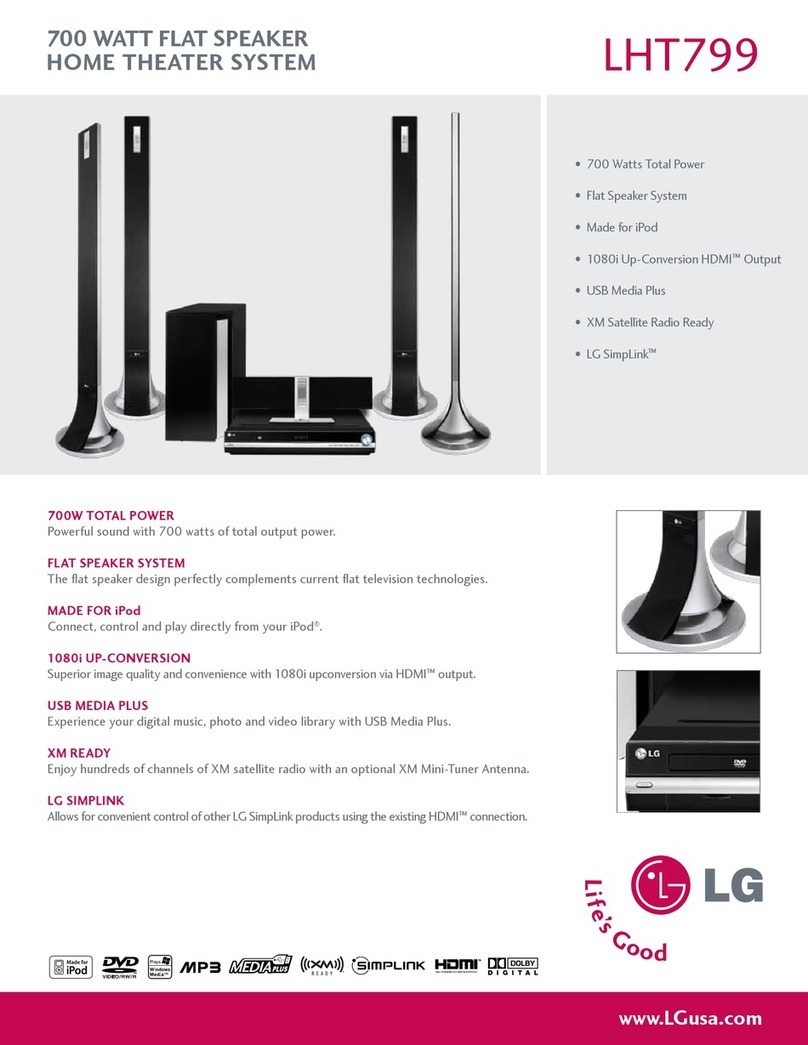SERVICE MANUAL
Sony Corporation
Published by Sony Techno Create Corporation
HT-XT100
SPECIFICATIONS
HOME THEATRE SYSTEM
9-896-125-01
2015B33-1
© 2015.02
US Model
Canadian Model
AEP Model
UK Model
Australian Model
Ver. 1.0 2015.02
Note:
Be sure to keep your PC used for service and
checking of this unit always updated with the
latest version of your anti-virus software.
In case a virus affected unit was found during
service, contact your Service Headquarters.
Amplier section
U.S. models:
POWER OUTPUT AND TOTAL HARMONIC
DISTORTION:
(FTC)
Front L + Front R:
With 4 ohms loads, both channels
driven, from 200 Hz - 20,000 Hz; rated
10 Watts per channel minimum RMS
power, with no more than 1% total
harmonic distortion from
250 milliwatts to rated output.
POWER OUTPUT (reference):
Front L/Front R speaker:
20 Watts (per channel at 4 ohms,
1kHz)
Subwoofer:
40 Watts (at 4 ohms, 100 Hz)
Except US models:
POWER OUTPUT (rated)
Front L + Front R:
10 W + 10 W (at 4 ohms, 1 kHz, 1% THD)
POWER OUTPUT (reference)
Front L/Front R speaker:
20 Watts (per channel at 4 ohms,
1kHz)
Subwoofer:
40 Watts (at 4 ohms, 100 Hz)
Inputs
ANALOG IN
DIGITAL IN
Output
HDMI OUT ARC
HDMI Section
Connector
Type A (19pin)
USB Section
(USB) port
Type A
BLUETOOTH section
Communication system
BLUETOOTH Specication version 4.0
Output
BLUETOOTH Specication Power Class
2
Maximum communication range
Line of sight approx. 10 m (33 ft)1)
Maximum number of devices to be
registered
8 devices
Frequency band
2.4 GHz band (2.4000 GHz -
2.4835 GHz)
Modulation method
FHSS (Freq Hopping Spread Spectrum)
Compatible BLUETOOTH proles 2)
A2DP (Advanced Audio Distribution
Prole)
AVRCP (Audio Video Remote Control
Prole)
Supported Codecs 3)
SBC 4)
Transmission range (A2DP)
20 Hz - 20,000 Hz (Sampling frequency
44.1 kHz)
1) The actual range will vary depending on
factors such as obstacles between
devices, magnetic elds around a
microwave oven, static electricity,
cordless phone, reception sensitivity,
operating system, software application,
etc.
2) BLUETOOTH standard proles indicate
the purpose of BLUETOOTH
communication between devices.
3) Codec: Audio signal compression and
conversion format
4) Subband Codec
Speakers
Front L/Front R speaker section
Speaker system
2-way speaker system, Acoustic
suspension
Speaker
Tweeter: 14 mm - 25 mm ( 9/16 in - 1 in)
balance dome type
Woofer: 43 mm × 120 mm (1 3/4in ×
43/4in) cone type
Subwoofer section
Speaker system
Subwoofer system
Bass reex
Speaker
100 mm (4 in) cone type
General
Power requirements
120 V AC, 60 Hz (US and Canadian models)
220 V - 240 V AC, 50 Hz/60 Hz
(AEP, UK and Australian models)
Power consumption
On: 25 W
Standby mode (Control for HDMI is set
to on): 6 W or less
Standby mode (Control for HDMI is set
to o): 0.5 W or less
BLUETOOTH Standby mode: 6 W or
less
Dimensions (approx.) (w/h/d)
702 mm × 79 mm × 311 mm
(27 3/4in × 3 1/8in × 12 1/4in)
Mass (approx.)
6.5 kg (14 Ib 6 oz)
Supplied accessories
Remote control (1)
R03 (size AAA) batteries (2)
Optical digital cable (1)
Design and specications are subject to
change without notice.
